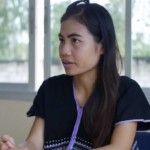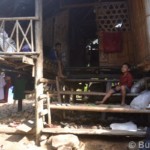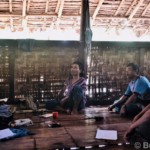Burma Link | September 11, 2017 Download this campaign memo and fact sheet as PDF. International support for IDPs in the southeast is set to stop after September 2017 and it is currently uncertain how IDPs’ basic needs will be met from October onwards. Burma Link urges international donors and non-governmental organisations to continue supporting Burma’s IDPs and refugees until a long-term plan is in place for basic needs provision for the displaced populations or until they are able to voluntarily return in safety and dignity. * Click here for urgent Karen appeal (and bank details) * Click here for urgent Shan appeal To support the appeals of local organisations in the current crisis, Burma Link is undertaking the “Keep Supporting” advocacy campaign with weekly alternating themes bringing you essential information and resources, calling for inclusive planning and sustainable solutions, and amplifying the voices of IDPs and refugees and organisations that represent them. #KeepSupporting #NotSafeToReturn #CrossBorderAid
[/fusion_separator]
GET INVOLVED FACTSHEET Urgency about the current situation Causes of displacement (east and southeast) IDPs in Southeast Burma/Myanmar Refugees along the Thailand-Burma/Myanmar border OBSTACLES TO RETURN FOR IDPS AND REFUGEES Safety Socio-economic factors Insufficient planning and preparations RECOMMENDED READING Urgent Appeals Ei Tu Hta IDP Supporting Committee. ‘Ei Htu Hta IDPs Supporting Committee Letter of Appeal for Continue Cross Border Humanitarian Aid’ (September 4, 2017). Shan State Refugee Committee (Thai Border). ‘Urgent Appeal From The Shan State Refugee Committee (Thai Border) To The International Community’ (August 30, 2017). Position papers Karen National Union Concerned Group (KNU CG). ‘Position Statement on Current Political Development and Assistance to Refugees’ (July 31, 2017). Karen Student Network Group (KSNG). ‘Position of Karen Student Network Group on Repatriation’ (June 20, 2017). https://www.burmalink.org/position-karen-student-network-group-repatriation-june-20-2017/ Karen Community Based Organizations (KCBO). ‘Karen Community Based Organizations’ Position on Refugees’ Return to Burma’ (September 11, 2012). Additional resources Burma Link, Human Rights Foundation of Monland (HURFOM), and Burma Partnership. ‘Invisible Lives: The Untold Story of Displacement Cycle in Burma’ (August 2016). Burma Link and Burma Partnership. ‘Briefing Paper: Voices of Refugees – Situation of Burma’s Refugees Along the Thailand-Burma Border’ (April 27, 2015). Burma Link. ‘Thailand-Burma Border: Overview’ (updated October 6, 2016). Burma Link. ‘Not Safe for the Refugees to Return”: Karen Students Release Their Position on Repatriation’ (June 22, 2017) Progressive Voice (PV). ‘Where Do We Go from Here? A snapshot of Recent Development for Refugees Along the Thailand-Myanmar Border’ (December 2016). Shan Human Rights Foundation (SHRF). ‘As Conflict Escalates in Shan State, Aid Must Not Be Cut Off to Shan-Thai Border Refugees’ (August 30, 2017). The Border Consortium (TBC). ‘2016 Annual Report’ (2017). The Border Consortium (TBC). ‘Refugee and IDP Camp Populations’ Map (July 2017). United Nations High Commissioner for Refugees (UNHCR). ‘Strategic Roadmap for Voluntary Repatriation: Refugees from Myanmar in Thailand 2015-2017’ (January 2017). RECOMMENDED VIDEOS Burma Link, Karen Student Network Group, and Karen Youth Organisation. “Recognise Us: Refugee Youth on the Thailand-Burma Border” (May 2017). https://www.youtube.com/watch?v=6CB5YZeCsJA&t=7s Burma Link, Karen Student Network Group, and Karen Youth Organisation. ‘Unrecognized Leaders: Tomorrow’s Hope (English version)’ (February 22, 2017). Burma Link. ‘”We Don’t Want to Go Back”: Refugee on the Thailand-Burma Border’ (August 14, 2013). Burma Link and Burma Partnership. ‘From Refugees to IDPs: Untold Story of Displacement Cycle in Burma’ (June 20, 2016). Burma Partnership. ‘Nothing About Us Without Us’ (December 10, 2012). Karen News. ‘Displaced Karen Protest to get Burma army out of their land’ (May 24, 2017). Karen News. ‘Karen Refugees: Homeland still not safe, camps need support’ (June 20, 2017). ABOUT BURMA LINK Burma Link advocates for the rights of Burma’s marginalized ethnic nationalities and displaced conflict-affected communities. Burma Link particularly focuses on amplifying the voices of disempowered and disenfranchised populations along the Thailand-Burma border.
KEEP SUPPORTING CAMPAIGN
https://www.burmalink.org/ei-htu-hta-idps-supporting-committee-letter-appeal-continue-cross-border-humanitarian-aid/
https://www.burmalink.org/urgent-appeal-shan-state-refugee-committee-thai-border-international-community/
https://www.burmalink.org/position-statement-current-political-development-assistance-refugees/
http://womenofburma.org/Statement&Release/11-09-2012-Karen-Community-Based-Organizations-Position-on-Refugees-Return-to-Burma-position-paper.pdf
https://www.burmalink.org/wp-content/uploads/2016/08/FINAL-Eng-IDP-Report.pdf
https://www.burmalink.org/briefing-paper-voices-of-refugees-situation-of-burmas-refugees-along-the-thailand-burma-border/
https://www.burmalink.org/background/thailand-burma-border/overview/
https://www.burmalink.org/not-safe-refugees-return-karen-students-release-position-repatriation/
http://progressivevoicemyanmar.org/wp-content/uploads/2016/12/Refugee-Briefer-2016-FINAL_eng.pdf
https://www.burmalink.org/conflict-escalates-shan-state-aid-must-not-cut-off-shan-thai-border-refugees/
http://www.theborderconsortium.org/media/80489/2016-annual-report-jan-dec.pdf
http://www.theborderconsortium.org/media/84802/2017-07-jul-map-tbc-unhcr.pdf
http://data.unhcr.org/thailand/documents.php?page=1&view=grid&Org%5B%5D=3&WG%5B%5D=3&Type%5B%5D=17
https://www.youtube.com/watch?v=iXTZSzrm_II&t=1501s
https://www.youtube.com/watch?v=qJbGIaijqTE&t=86s
https://www.youtube.com/watch?v=OuK1JOyjugo&t=45s
https://www.youtube.com/watch?v=gOW07BsBdrM
https://vimeo.com/channels/205092/218727523
https://vimeo.com/channels/205092/222309609You may also like:
[/fusion_fontawesome]Read about the situation – See list of resources at the bottom of this post.
[/fusion_fontawesome]Follow Burma Link’s campaign on Facebook and Twitter. Use the #KeepSupporting #NotSafeToReturn and #CrossBorderAid hashtags to spread the word about the cause.
[/fusion_separator]

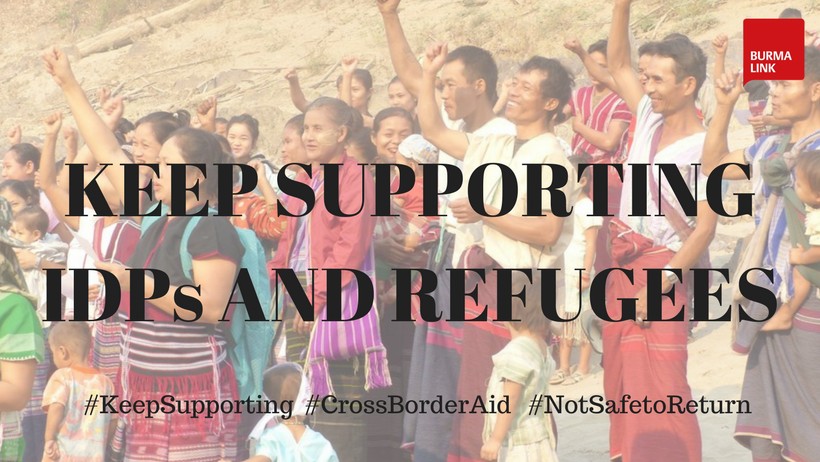
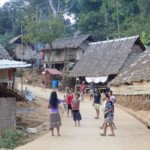

![‘The Burma Army Killed Him [Saw O Moo] – At Least the Government or the Army Should Commit to Not Do This Again’: Paul Sein Twa, Executive Director of KESAN](https://www.burmalink.org/wp-content/uploads/2018/05/Saw-O-Moo-commemoration-Paul-Sein-Twa-speaking-2-150x150.jpg)
